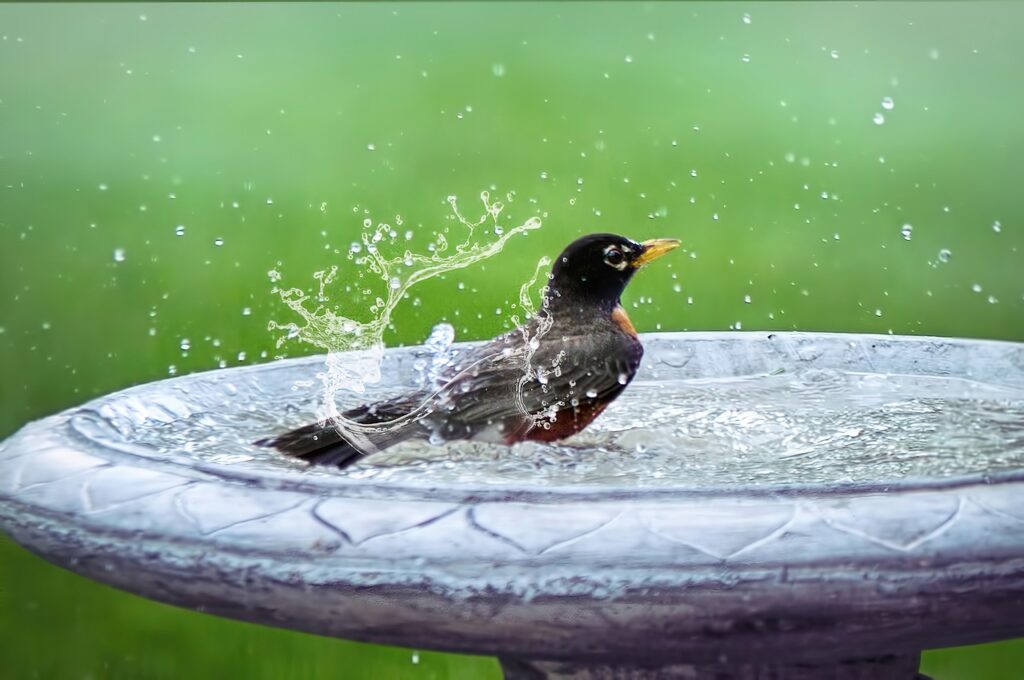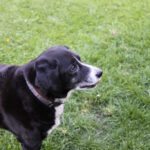Creating a safe haven for bird bathing in your backyard can be a rewarding experience for both you and your feathered visitors. Not only does it provide them with a place to cool off and clean themselves, but it also brings an array of delightful birds right to your doorstep. In this guide, you’ll learn the essential steps to construct a bird bath that is inviting, safe, and easy to maintain.
“Birds are indicators of the environment. If they are in trouble, we know we’ll soon be in trouble.” – Roger Tory Peterson
Ready to get started? Let’s dive into the materials, design tips, and maintenance tricks that will transform your outdoor space into a bird-friendly oasis.
What materials are safe for bird baths?
Ceramic is a popular and safe material for bird baths. It is durable, easy to clean, and can be glazed to create a smooth surface that is gentle on birds’ feet. Additionally, ceramic bird baths often come in various designs and colors, making them an attractive addition to any garden. Concrete bird baths are another safe option. They are sturdy and can withstand various weather conditions. However, it’s important to ensure that the concrete is sealed properly to prevent water absorption, which can lead to cracks. A well-sealed concrete bird bath provides a stable and safe environment for birds to bathe.
Stone bird baths are both natural and safe. They blend seamlessly into garden settings and provide a rough texture that birds can grip easily. Stone bird baths are also heavy, making them less likely to tip over. However, they can be more challenging to clean due to their porous nature. Metal bird baths, particularly those made from stainless steel or copper, are safe and durable. These materials resist rust and can be shaped into various designs. It’s essential to avoid bird baths made from metals that can corrode or leach harmful substances into the water, such as galvanized steel or aluminum.
Plastic bird baths can be safe if they are made from high-quality, non-toxic materials. They are lightweight and easy to move, but they can degrade over time when exposed to sunlight. Look for UV-resistant plastic to ensure longevity and safety for the birds. Glass bird baths, especially those made from tempered or thick glass, can be a safe and visually appealing option. They are easy to clean and do not absorb water. However, they can be fragile, so it’s important to place them in a secure location to prevent breakage.
What are the best locations for a bird bath?
One of the best locations for a bird bath is a spot that offers partial shade. This helps keep the water cool and prevents it from evaporating too quickly. Additionally, shaded areas are more comfortable for birds, especially during hot summer days. Placing the bird bath near shrubs or trees can provide birds with a sense of security. These natural elements offer quick escape routes from potential predators and create a more inviting environment for birds to visit.
Ensure the bird bath is situated in a visible area from your home. This allows you to enjoy birdwatching from the comfort of your living space and also makes it easier to monitor and maintain the bird bath. Avoid placing the bird bath too close to feeders. While it might seem convenient, combining these two elements can lead to overcrowding and increased competition among birds. Instead, keep them at a reasonable distance to create a more harmonious environment.
Choose a location with a stable and level surface to prevent the bird bath from tipping over. This not only ensures the safety of the birds but also makes it easier to clean and refill the bath. Consider placing the bird bath near a garden or flower bed. The presence of colorful flowers and plants can attract more birds, enhancing the overall appeal of your bird bathing haven.
How deep should a bird bath be?
The ideal depth for a bird bath is shallow, generally between 1 to 2 inches. Birds prefer shallow water where they can comfortably stand and splash around without the risk of drowning. For larger birds, you can create a gradient in the bird bath, with one side being around 1 inch deep and the other side gradually increasing to about 2 inches. This allows birds of various sizes to find a comfortable spot.
If your bird bath is deeper than 2 inches, consider adding stones or pebbles to the bottom. This not only reduces the effective depth but also provides birds with a secure footing. It’s important to ensure that the bird bath has a rough surface. A slippery surface can make it difficult for birds to maintain their balance, increasing the risk of accidents.
It’s important to ensure that the bird bath has a rough surface. A slippery surface can make it difficult for birds to maintain their balance, increasing the risk of accidents. Regularly check the water level in your bird bath. Evaporation and splashing can reduce the water depth, so it’s essential to refill it as needed to maintain the optimal depth.
Make a safe bird bathing place
Creating a safe and inviting bird bathing place in your backyard involves a few critical steps. First, ensure the bath itself is shallow, mimicking a natural puddle. A depth of no more than two inches is ideal to prevent accidental drowning, particularly for smaller birds. Consider using a textured surface or placing small stones at the bottom to give the birds a secure footing.
Location is another vital factor. Place the bird bath in a shaded area to help keep the water cool and to reduce the algae growth. Birds also prefer spots where they can easily scout for predators. A location near shrubs or trees provides them with a quick escape route if needed.
Cleanliness is key to maintaining a healthy environment for your feathered friends. Regularly empty the bird bath, scrub it down with a diluted bleach solution, and rinse thoroughly to remove any algae or bird droppings. Refilling it with fresh, clean water several times a week is essential, especially in warmer weather when water can evaporate quickly.
To enhance the attraction, consider adding a dripper or a small water pump. The sound and sight of moving water can be irresistible to birds, encouraging a steady flow of visitors to your bath. If you can, position the bird bath under a rain downspout for a natural refill during showers, though this isn’t a reliable primary source of water.
By following these steps and routinely maintaining the bird bath, you’ll be providing a vital source of hydration and hygiene for local bird populations. Your efforts will be rewarded with the joy of witnessing a diverse array of birds splashing and preening, bringing life and beauty to your outdoor space.
What plants attract birds to a bird bath?
Native plants are highly effective in attracting birds to a bird bath. These plants are adapted to the local climate and soil conditions, providing a natural and familiar environment for birds. Examples include coneflowers, black-eyed Susans, and milkweed, which offer seeds and nectar that many bird species find irresistible. Berry-producing shrubs and trees are another excellent choice for attracting birds. Plants like holly, elderberry, and serviceberry provide a rich source of food, especially during the fall and winter months when other food sources may be scarce. The berries not only nourish the birds but also encourage them to visit and stay near your bird bath.
Flowering plants that produce nectar can draw in hummingbirds and other nectar-feeding species. Trumpet vine, bee balm, and columbine are examples of plants that produce vibrant flowers filled with nectar. These plants can create a colorful and lively environment around your bird bath, making it a focal point for bird activity. Grasses and ground covers can also play a role in attracting birds. Native grasses such as switchgrass and little bluestem provide seeds and nesting materials. Ground covers like creeping thyme and ajuga offer shelter and foraging opportunities for smaller bird species. These plants can create a diverse habitat that supports a variety of bird behaviors.
| Plant Type | Examples | Benefits for Birds |
|---|---|---|
| Flowering Plants | Trumpet Vine, Bee Balm, Columbine | Produces nectar to attract hummingbirds and nectar-feeding species |
| Native Grasses | Switchgrass, Little Bluestem | Provide seeds and nesting materials |
| Ground Covers | Creeping Thyme, Ajuga | Offer shelter and foraging opportunities for smaller bird species |
How often should bird baths be cleaned?
Bird baths should be cleaned regularly to ensure they remain a safe and inviting place for birds. Ideally, you should clean your bird bath at least once a week. This helps to prevent the buildup of algae, bacteria, and other contaminants that can be harmful to birds. During warmer months or periods of heavy use, you may need to clean the bird bath more frequently. In hot weather, water can evaporate quickly, leaving behind residues that can promote the growth of harmful microorganisms. Cleaning every few days in such conditions can help maintain a healthy environment.
If you notice any visible dirt, debris, or algae in the bird bath, it’s a good indication that it needs cleaning. Regular inspection of the bird bath can help you determine when it requires attention, ensuring that it remains a safe place for birds to bathe and drink. Using a scrub brush and a mixture of water and mild dish soap can effectively clean the bird bath. Be sure to rinse thoroughly to remove any soap residue, as this can be harmful to birds. For stubborn algae or mineral deposits, a solution of nine parts water to one part vinegar can be used.
After cleaning, refill the bird bath with fresh water. Keeping the water clean and fresh not only attracts more birds but also promotes their health and well-being. Regular maintenance of the bird bath is essential for creating a safe and inviting haven for your feathered visitors.



